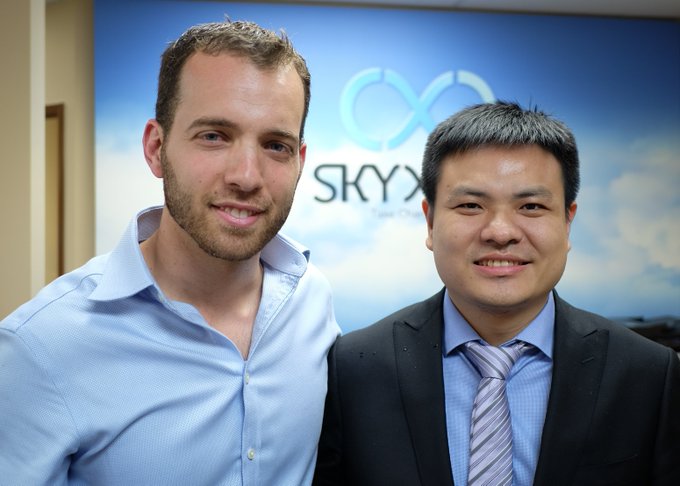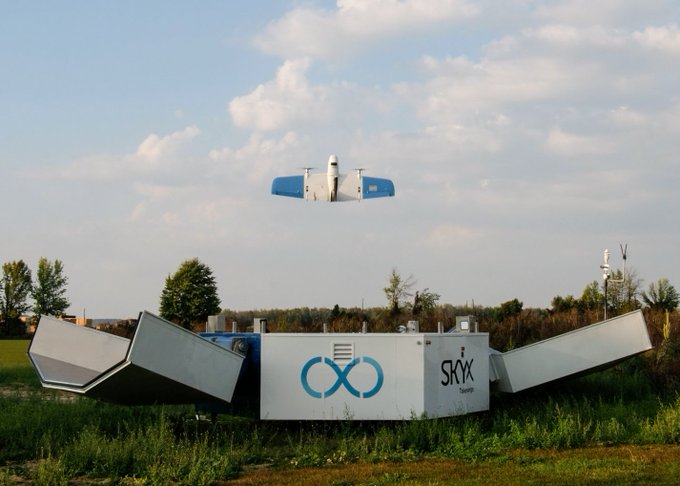Secrets China Is Stealing From Us

June 25, 2024
•16 min read
These are the secrets China stole from us all!
Since the early 2000s, China have stolen a mind boggling $600 billion of American trade secrets every single year. That’s a whopping $12 trillion over the last 20 years and they’ve got spies everywhere from tech firms to the military. Let’s find out what secrets the Chinese government have been stealing from us.
China's J-20 Stealth Fighter
In 2007, a Chinese cyber espionage unit called the Technical Reconnaissance Bureau stole heaps of incredibly sensitive U.S. aircraft data before passing that information on to the Aviation Industry Corporation of China. And those weren’t any old aircraft parts. China scooped precious intel on the F-22 Raptor and F-35 Lightning II stealth fighter jets, which have the absolute apex of stealth technology to avoid enemy detection.
Fast forward to 2016 and China unveiled their own stealth fighter, the Chengdu J-20. Sounds familiar? It’s not a carbon copy and the J-20 is slightly narrower and longer than the F35, and has much greater range, internal fuel capacity, and internal weapons capabilities.We don’t know exactly how much of the stolen F-35 technology made it into the J-20. At a guess, the sensor fusion and network integration, which are the onboard computer systems that enable aircraft parts to communicate with each other, aren’t as advanced as the American aircraft.That’s because those took the most time, money, and effort for the U.S. to develop. So, what came of the hackers anyway? For the most part, not a lot. But in 2016, Chinese national Su Bin admitted to his part in a years long espionage program stealing military technical data.He got 46 months in prison for telling Chinese hackers which files to steal and the significance of the stolen information. However, just under four years in prison for jeopardizing prized national security information seems a little lenient.Stealth Ship
At a convention in Abu Dhabi in 2017, China unveiled models for their latest naval vessel, and it bears a striking resemblance to American littoral combat ships. Just like with the J-20, the Chinese copycat ship isn’t an exact replica. The U.S. frigate is 417 feet long, however the Chinese ship is fifty feet longer, with a larger crew capacity and much, much heavier artillery.

What made that really surprising, though, was that China had already started producing a similar frigate design, albeit with a monohull, the Type 054A Jiangkai II. So, why suddenly switch? Well, that’s not really clear. It could be that the wider platform provided by the new tri-hull design allows for side by side aircraft hangars.
That might suggest China’s new, long-term military strategy is to employ more manned and unmanned aircraft. Or maybe they’re just trying to better understand the enemy by copying their arsenal. Whatever the reason, it seems like China are trying to close the gap on the U.S.’s military advantage. We might still be winning the race for now, but for how long, who knows?Leaked Nuclear Weapon Secrets
In a redacted report released to the public in 1999, US Representative Christopher Cox accused China of using illicit tactics to access information on nuclear weapons. In his report, Cox claimed that China had acquired massive amounts of classified information in a long term spying campaign over the prior twenty years.
China’s Intercontinental Ballistic Missiles, or ICBMs, had been seriously lacking compared to American missiles. However, by 1992, China had conducted successful tests on missiles which used modern thermonuclear designs. Those designs shrunk hydrogen bombs down so that many can fit atop a single missile and be fired from trucks and other mobile platforms. How China achieved that level of technological advancement, which took the United States decades, millions of dollars, and rigorous testing, is a mystery. So the question is, China just stole it? Well, maybe not. China responded to the report calling it racist and claiming the intel they’d acquired on nuclear weapons was readily available public information. It seems unlikely that one could walk into the local library and learn how to build a nuclear warhead, but that’s not to say it isn’t true. And considering no one has ever been formally accused of stealing the information, it’s hard to tell who’s lying. Also, America’s track record of accusing political enemies about weapons of mass destruction in the late 90s and early 2000s hasn’t exactly aged well.Huawei 5G Scandal
You’ve probably heard of Huawei, a giant Chinese tech corporation who make everything from computers and cell phones to large scale communication equipment. However, Huawei isn’t the most popular kid on the block. Even though they say they’re a private company, no company in China is truly independent of what the government tells them to do.

Another 2010 lawsuit claimed former Motorola employees Hechun Cai and Jinzhong Zhang flew to China in 2003 and gave trade secrets to Huawei CEO Ren Zhengfei. How do we know they were trade secrets? They wrote “Motorola Confidential Proprietary” on every page. Not very subtle. Those are just two of hundreds of flagrant allegations, but you get the picture and we can’t see that slowing down anytime soon.
TikTok Security Concerns
You must have heard about the controversial social media app TikTok. It’s literally the most popular app in the world. But in 2023, President Biden threatened to ban TikTok unless their Chinese parent company, ByteDance, sold it.

Wave Technology
Despite looking like a bomb, an attenuating wave converter is a machine that creates electricity from the movement of the ocean. The joints along the machine move with the shape of the waves, pushing against hydraulic rams as they do so.
In turn, those rams pump high pressure oil through motors that drive electrical generators. The resulting electricity is then fed down a cable to the seabed, where it’s linked up with the shore. That's how you’ve got ocean power. It’s so cool that in 2011 the Chinese Vice Premier, alongside a delegation of sixty people, travelled to the Pelamis facility in Edinburgh, Scotland where that machine was made. Seems a little out of the way for a work trip but it gets weirder.Just two months after the vice premier’s visit, there was a break in at Pelamis Wave Power and five laptops were stolen from the facility. Initially the crime was written off as there was no way to figure out who did it, and there wasn’t any great loss.
That is until a few years later when pictures started surfacing of China’s brand new attenuating wave machine, Hailong 1. China strongly denies outright stealing it. They claim that the Hailong 1 is based on independent research by China’s Shipbuilding Corporations and that there are “huge differences” in the design, appearance, and structure of the machine.
GhostNet Cyber Espionage Operation
America and Britain aren’t the only targets of Chinese spying tactics. In 2009, a massive surveillance program was uncovered which targeted important individuals, organizations, and governments all around the world. It was named Operation GhostNet.
In total, a shocking 1,295 computers across 103 countries were found to be compromised by a trojan horse, a malicious software that gains access to a computer by disguising itself as something else. Once inside, a hacker can remotely monitor the computer’s activity.This software was initially discovered in India at the office of the Dalai Lama, the foremost spiritual leader of Gelug Tibetan Buddhism, who was exiled from China in 1959. After that, compromised computers were discovered in the embassies of South Korea, Indonesia, Thailand, Taiwan, Portugal, Germany, and Pakistan. In other words, everywhere!
Spy Balloon
In early 2023, a giant spy balloon was shot down under orders from President Biden after it was spotted flying over North American airspace. China apologized and said it was a stray weather balloon that blew out of control. With limited self steering capabilities, the balloon had ventured into areas it shouldn’t have.
You would thing that it's a simple mistake. But the balloon China said got shot down and the balloon that actually got shot down couldn’t be more different. Typically, weather balloons are about 20ft wide.However, a colossal 200ft of soggy balloon was pulled from the wreckage. And beneath the balloon was a huge technology bay about the length of 2-3 busses, full of sensors and ariels for transmitting data. Either China was trying to check the weather on Neptune, or they were lying again.Later, it transpired that the lack of self steering capabilities was also a lie. The balloon had rudders and propellers that were more than suited to helping it move great distances. It really makes us wonder, how valuable was the information that balloon was collecting that they’d risk getting caught and losing an expensive piece of tech? Or maybe the balloon was just a distraction for something much more serious.China Steals Biodata Of 80% Of Americans
According to reports published in 2021, China might’ve compromised a huge amount of biodata on everyday Americans. From hacking healthcare companies to the smart technology in our homes, they’ve been very busy.
Seriously, up to 80% of US adults have had their healthcare information and DNA profiles accessed by the Chinese government. DNA contains your unique genetic code as well as loads of sensitive information like what dangerous diseases you’re susceptible to, including certain types of cancer.
Stolen Corn Seeds
In 2016, Chinese citizen Mo Hailong was sentenced to three years in prison for stealing valuable corn seeds from farms in Iowa. Those weren’t your run of the mill corn seeds, they’d been genetically modified to be re-plantable year after year.
The appeal is that if you can reuse the seeds you’ve got a practically endless supply of corn. Mo was trying to get his hands on those seeds to send them to his employer, a corn company back in China.
Invisibility Cloak
The entrepreneur Liu Ruopeng, sometimes called China’s Elon Musk, did his PhD at Duke University in North Carolina. But after completing it and returning to China was accused of stealing an invisibility cloak from the university.
This photo, of SkyX Founder @Didi_H1 & Dr. Liu Ruopeng (flagship investor @KuangChiGCI ) was taken about two years ago. Much has happened since – including a remarkable 100+ km autonomous BVLOS mission. Now? Full circle: In June, we're headed to #China to demo the SkyX system!
LED Filament Patent Infringement
In 2019, a group of researchers from the University of California, Santa Barbara filed a lawsuit against Walmart, Amazon, Target and Bed Bath & Beyond for selling retro style filament lightbulbs without proper authorization. The bulbs in question were developed by the university and have become incredibly popular in recent years due to their cool vintage look.
Except, the technology behind them is patented by the university, meaning they own the legal rights to it. So, when Chinese manufacturers had the bright idea to steal the technology, produce bulbs en masse, and have Amazon sell them as their own products, the university knew something was afoot.If China stole it, why is it the American companies’ fault? Ultimately they’re responsible for making sure the goods they sell to unwitting buyers aren’t in violation of any property theft. And the technology behind the lightbulb belongs to the university.Could that just be a mistake on the retailer’s part? Sure. But sales in the US of those bulbs were expected to top $1 billion in 2019 alone. It seems a little convenient that they’d just not look into the origins of their “own brand” products.Space Tech Theft
Since its launch in 1998, the International Space Station has been visited by a tremendous 266 astronauts from over 20 different countries. Surprisingly, China isn’t one of those countries.






















